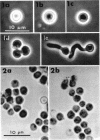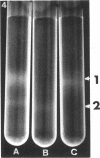Abstract
l-Leucine and several amino acids were effective germination inducers of microconidia of Trichophyton mentagrophytes. During germination, phase-darkening and swelling occurred concomitantly with the loss of resistance to heat and stain, reduction of dry weight and specific gravity, and development of active glucose utilization. Germination induced by l-leucine was significantly stimulated by a pretreatment of the spores with sublethal doses of heat. No nucleosides or nucleotides were stimulatory to the l-leucine-induced germination of the microconidia. d-Leucine was almost an equally effective germinant as its l form. No carbohydrates, salts, vitamins, or other compounds tested induced germination of the fungus spore. Other factors that affected l-leucine-induced germination of the microconidia included the concentration of leucine, the inoculum size of the spores, temperature, and pH. The anaerobic condition and the presence or absence of carbon dioxide had no significant effects on the germination. Short germ tubes usually developed when the germinated spores were further incubated either in the presence or absence of l-leucine. The cytological study of the germinating microconidia revealed that the fragmentation of lipid granules was the major structural change associated with the germination.
Full text
PDF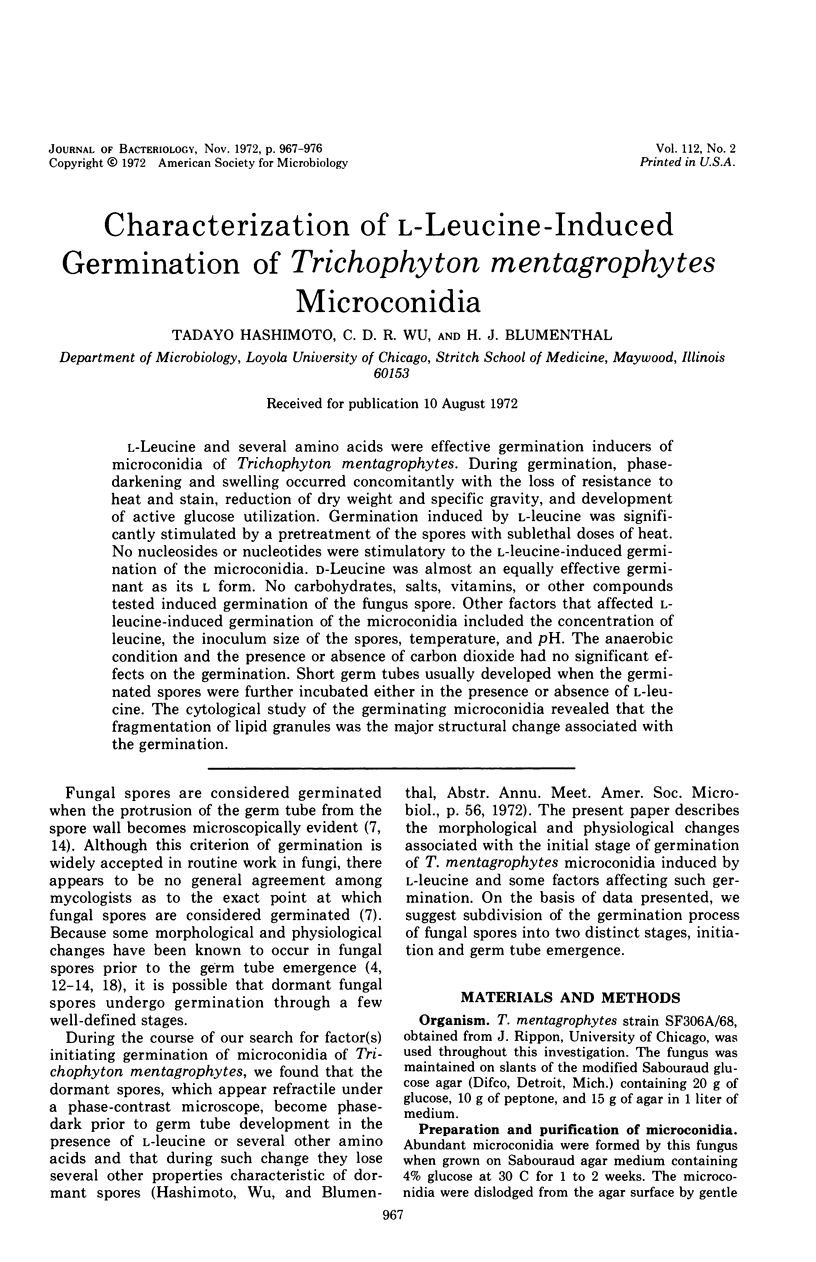
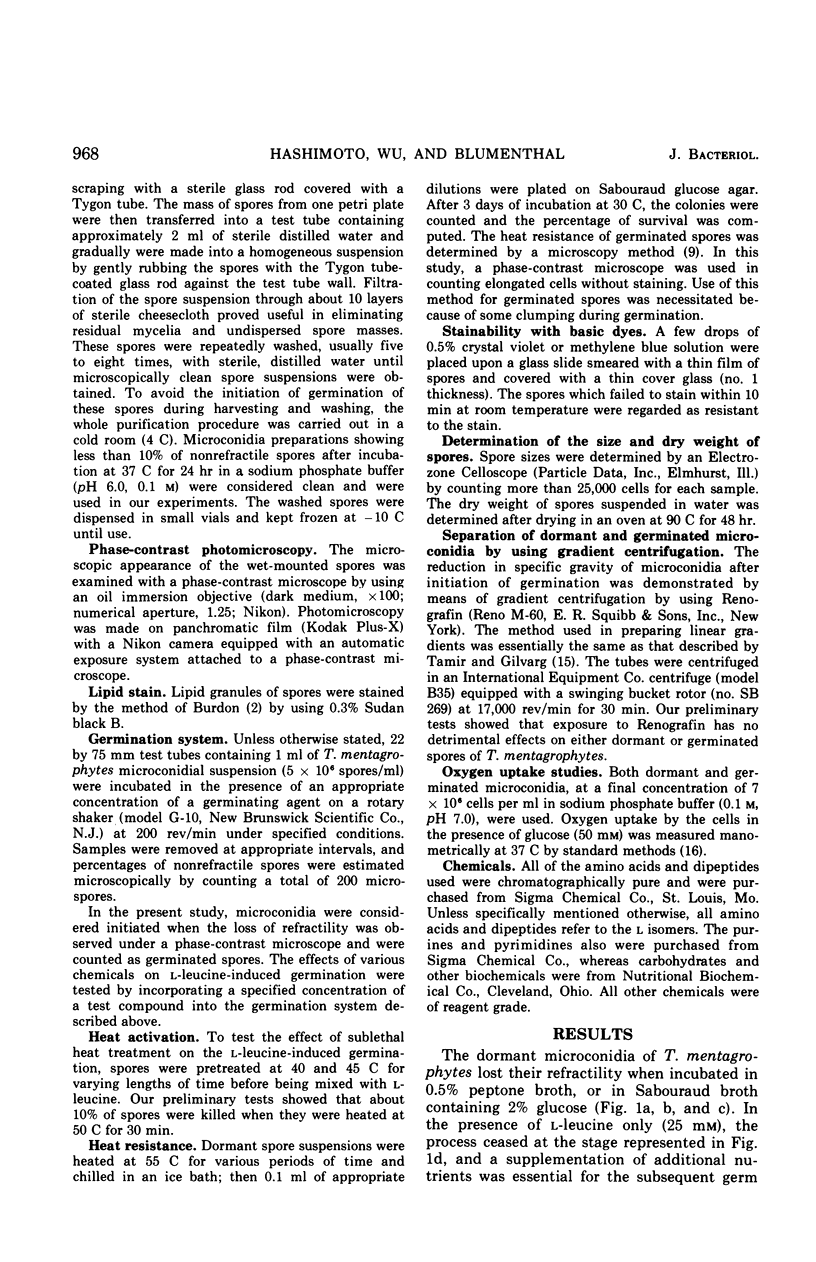
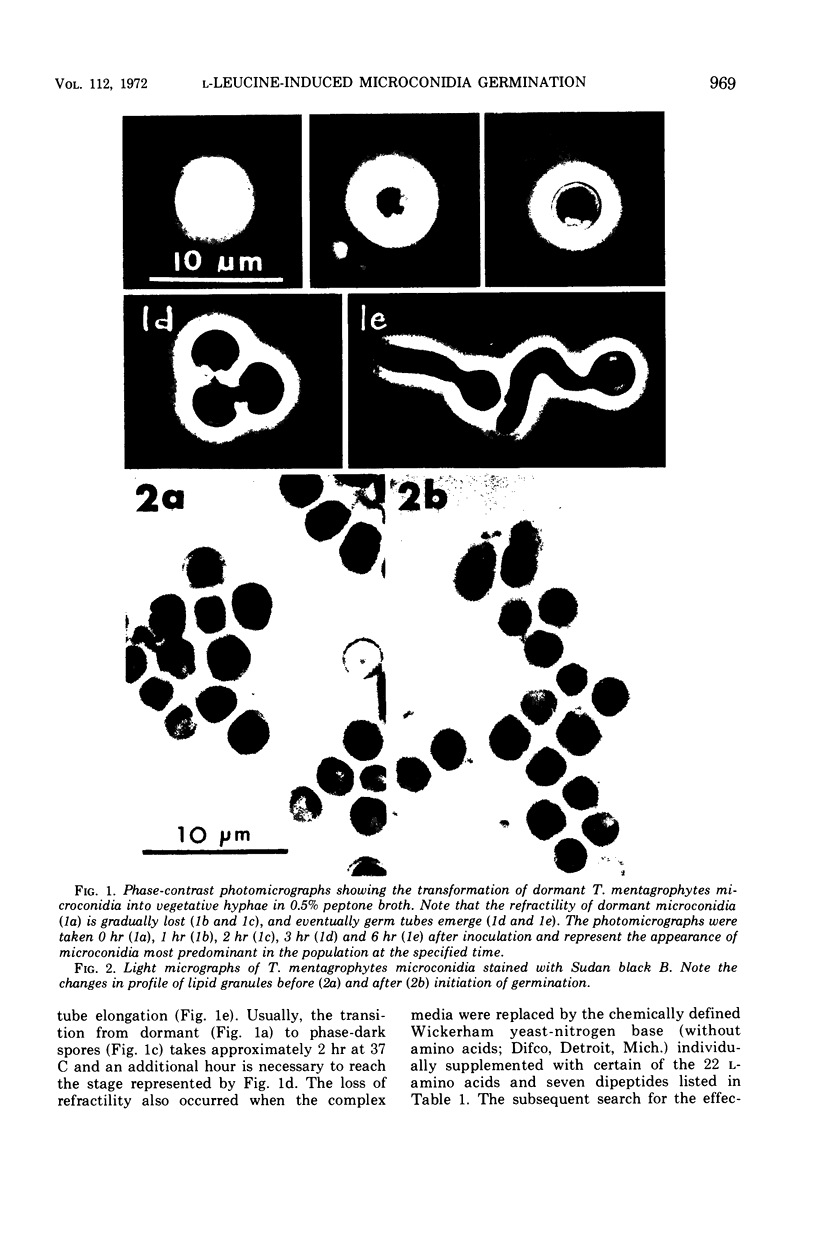
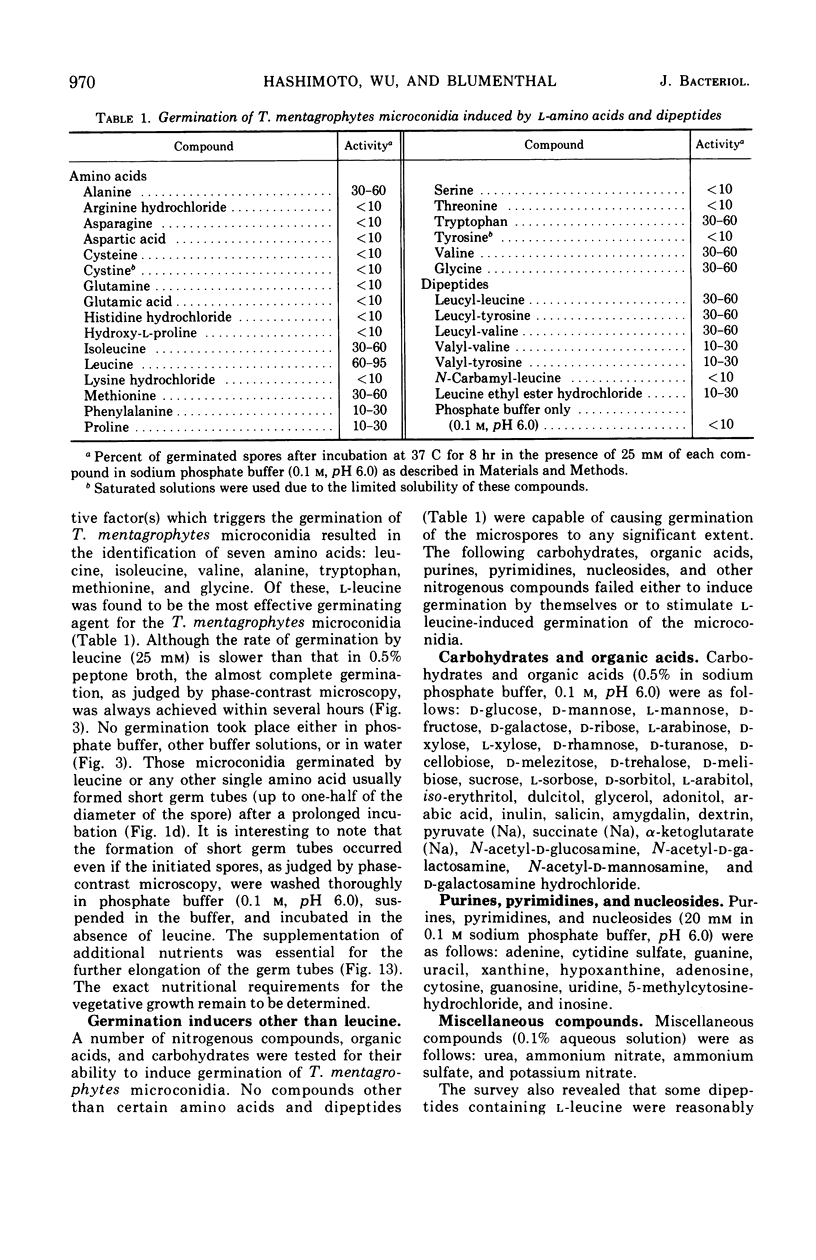
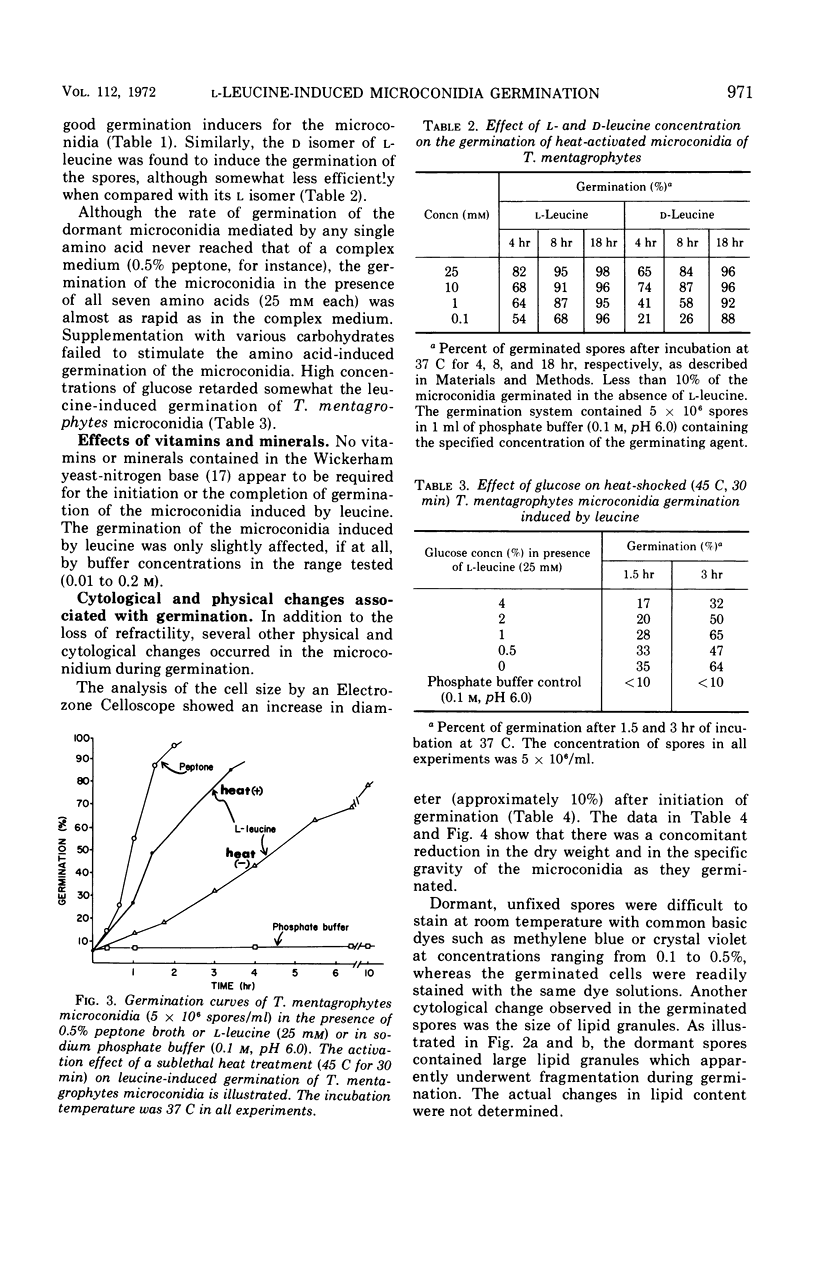
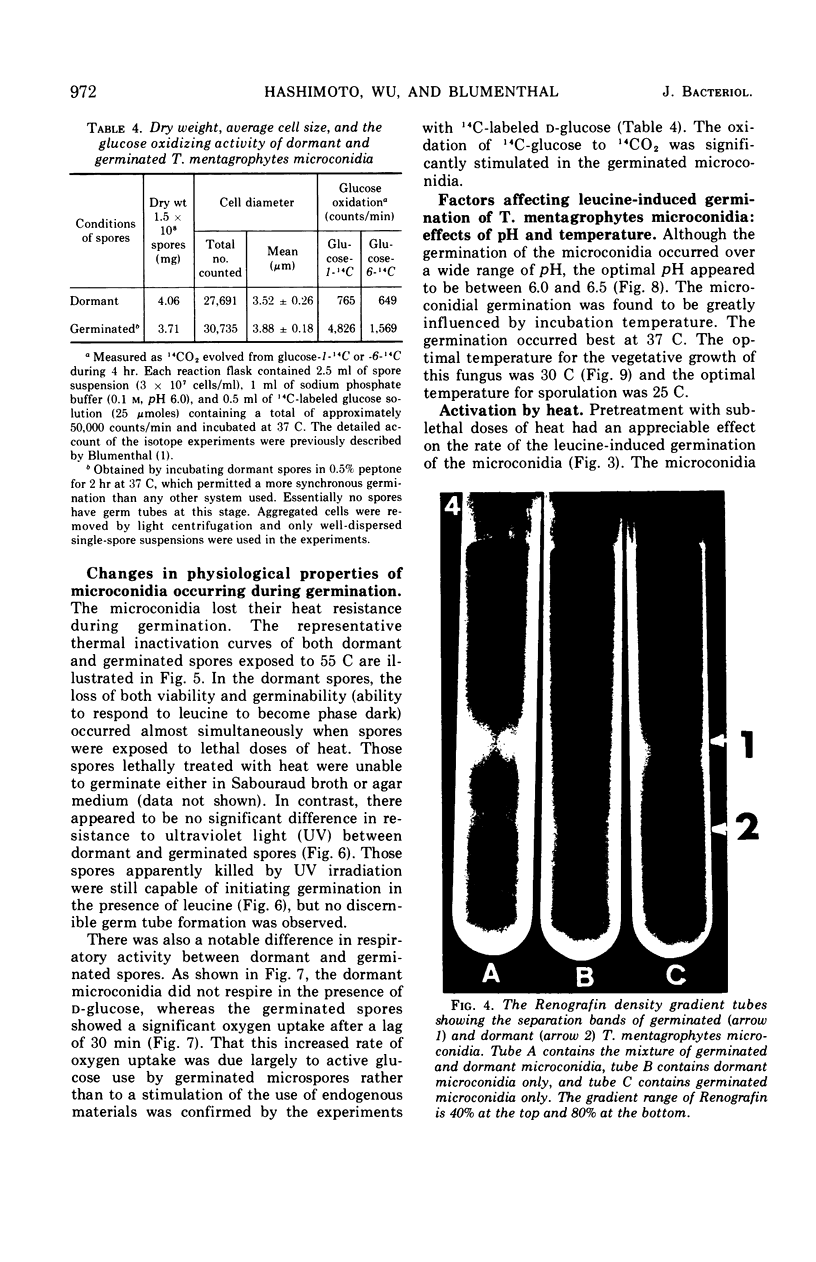
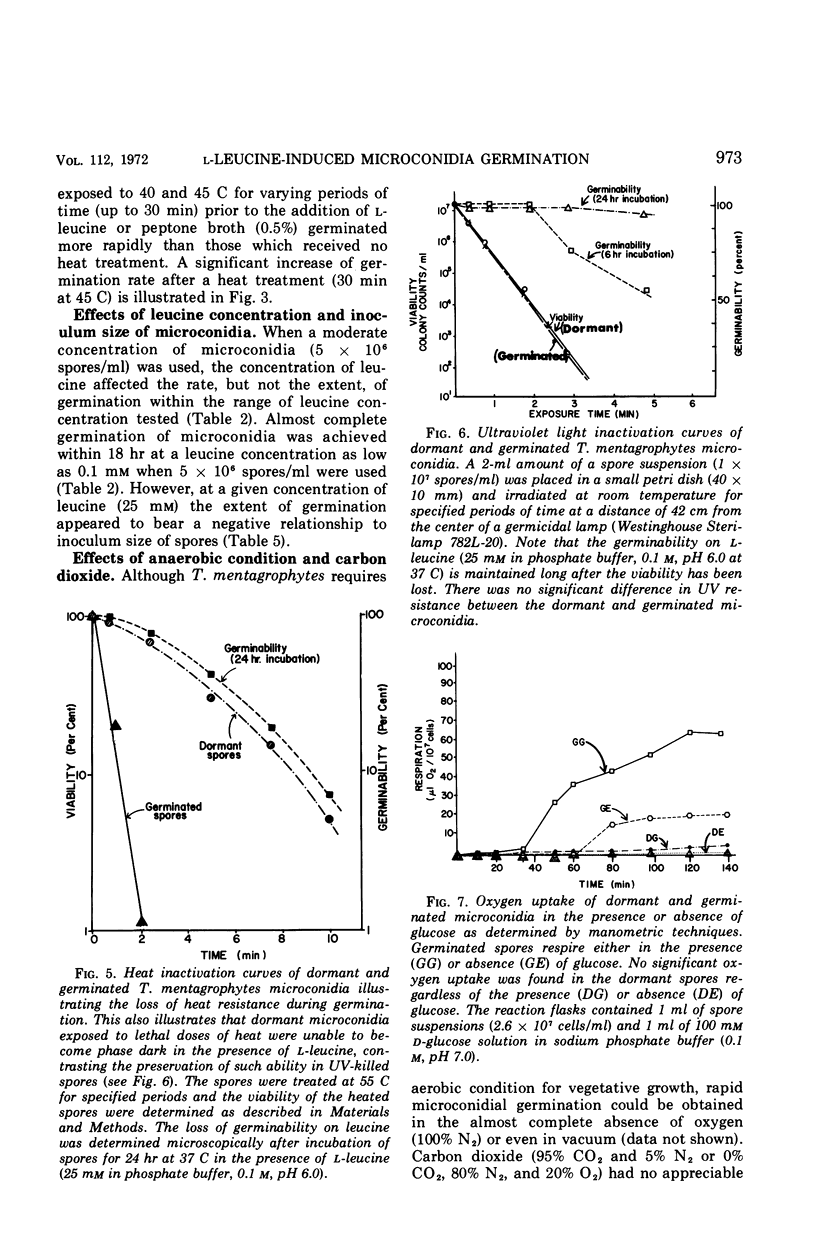
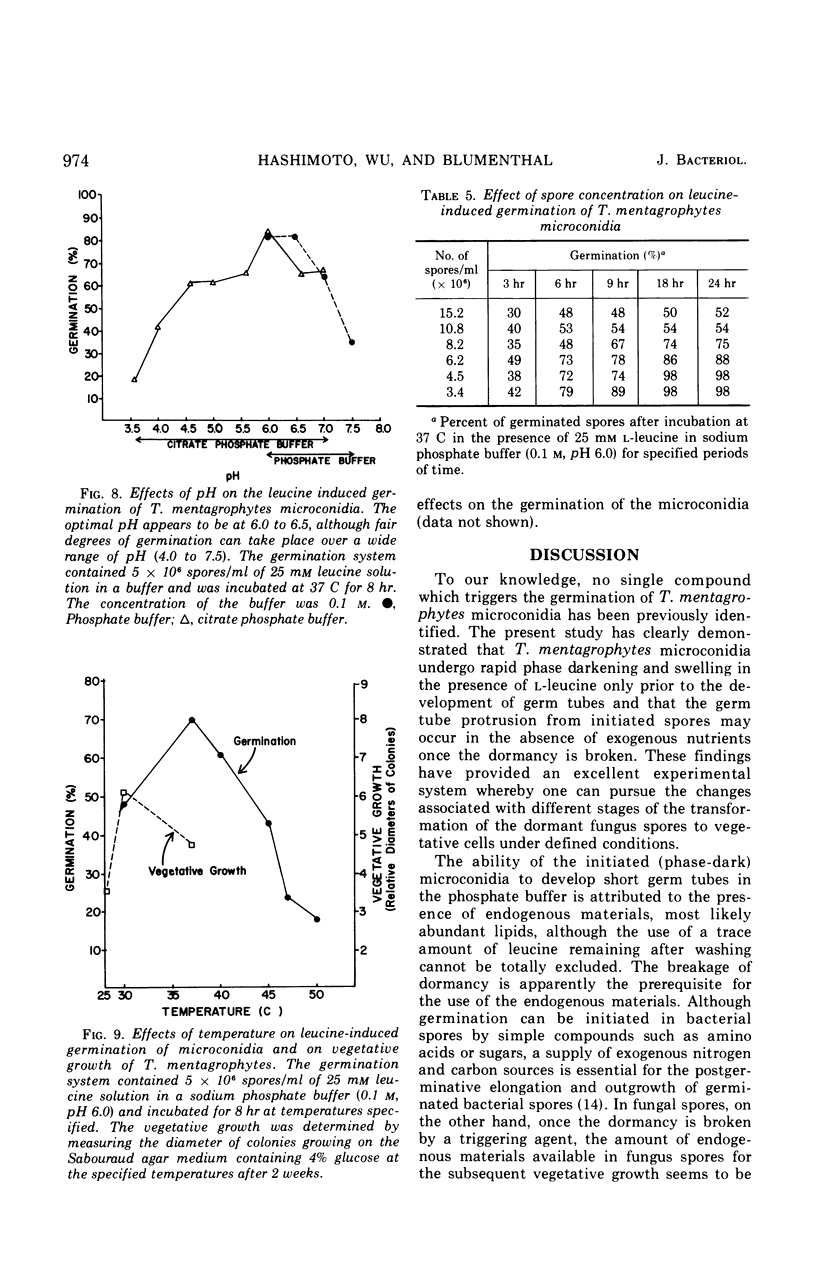
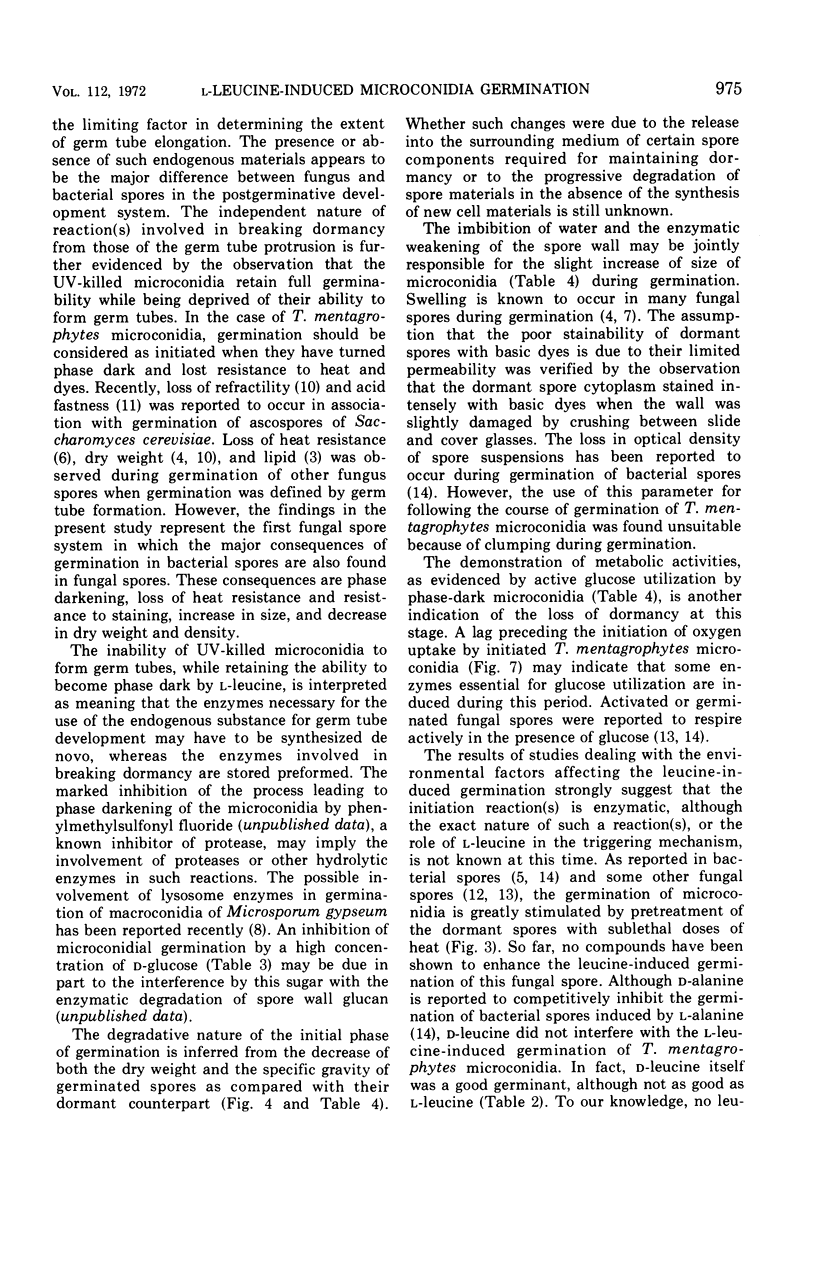
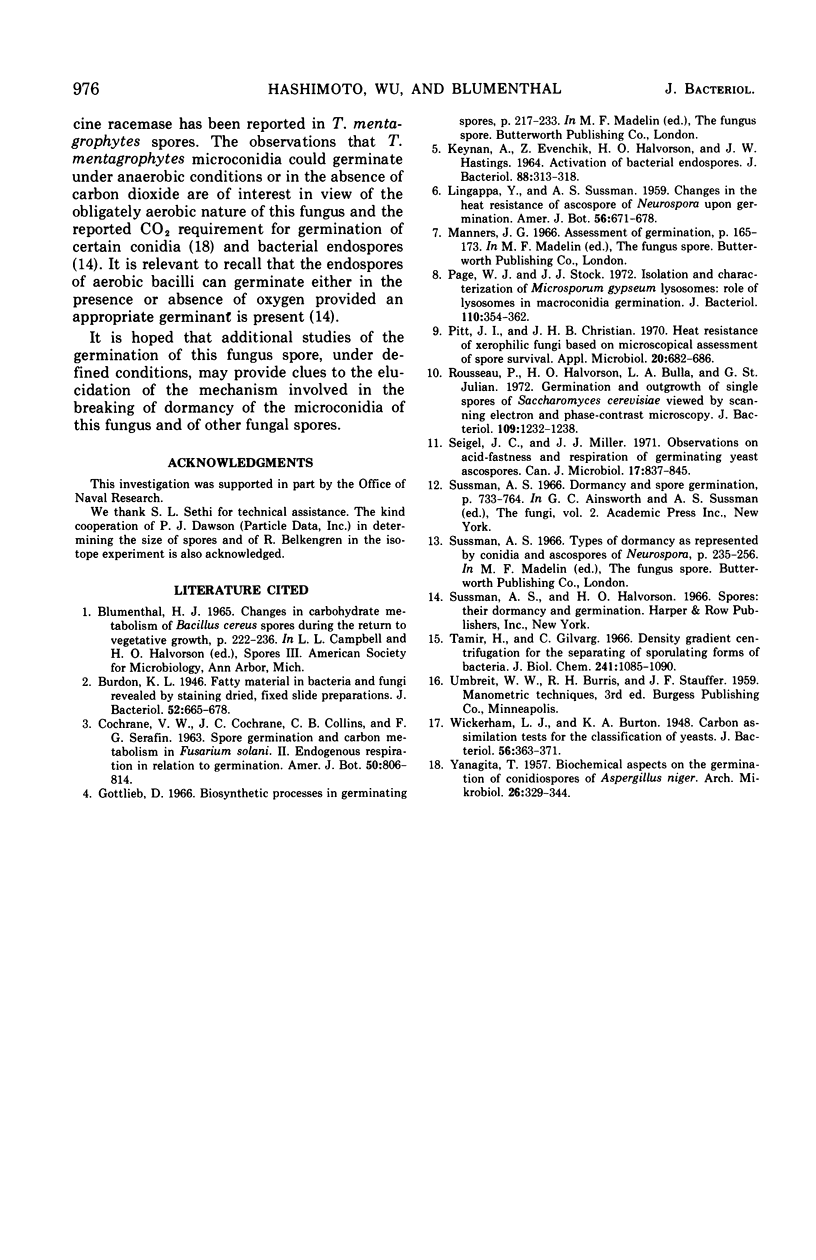
Images in this article
Selected References
These references are in PubMed. This may not be the complete list of references from this article.
- Burdon K. L. Fatty Material in Bacteria and Fungi Revealed by Staining Dried, Fixed Slide Preparations. J Bacteriol. 1946 Dec;52(6):665–678. doi: 10.1128/jb.52.6.665-678.1946. [DOI] [PMC free article] [PubMed] [Google Scholar]
- KEYNAN A., EVANCHIK Z., HALVORSON H. O., HASTINGS J. W. ACTIVATION OF BACTERIAL ENDOSPORES. J Bacteriol. 1964 Aug;88:313–318. doi: 10.1128/jb.88.2.313-318.1964. [DOI] [PMC free article] [PubMed] [Google Scholar]
- Page W. J., Stock J. J. Isolation and characterization of Microsporum gypseum lysosomes: role of lysosomes in macroconidia germination. J Bacteriol. 1972 Apr;110(1):354–362. doi: 10.1128/jb.110.1.354-362.1972. [DOI] [PMC free article] [PubMed] [Google Scholar]
- Pitt J. I., Christian J. H. Heat resistance of xerophilic fungi based on microscopical assessment of spore survival. Appl Microbiol. 1970 Nov;20(5):682–686. doi: 10.1128/am.20.5.682-686.1970. [DOI] [PMC free article] [PubMed] [Google Scholar]
- Rousseau P., Halvorson H. O., Bulla L. A., Jr, St Julian G. Germination and outgrowth of single spores of Saccharomyces cerevisiae viewed by scanning electron and phase-contrast microscopy. J Bacteriol. 1972 Mar;109(3):1232–1238. doi: 10.1128/jb.109.3.1232-1238.1972. [DOI] [PMC free article] [PubMed] [Google Scholar]
- Seigel J. L., Miller J. J. Observations on acid-fastness and respiration of germinating yeast ascospores. Can J Microbiol. 1971 Jul;17(7):837–845. doi: 10.1139/m71-135. [DOI] [PubMed] [Google Scholar]
- Tamir H., Gilvarg C. Density gradient centrifugation for the separation of sporulating forms of bacteria. J Biol Chem. 1966 Mar 10;241(5):1085–1090. [PubMed] [Google Scholar]
- Wickerham L. J., Burton K. A. Carbon Assimilation Tests for the Classification of Yeasts. J Bacteriol. 1948 Sep;56(3):363–371. doi: 10.1128/jb.56.3.363-371.1948. [DOI] [PMC free article] [PubMed] [Google Scholar]
- YANAGITA T. Biochemical aspects on the germination of conidiospores of Aspergillus niger. Arch Mikrobiol. 1957;26(4):329–344. doi: 10.1007/BF00407583. [DOI] [PubMed] [Google Scholar]



